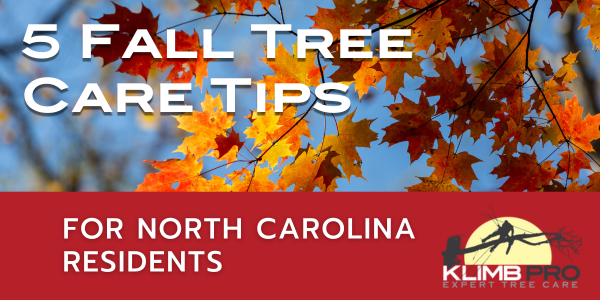
As the cooler temperatures slowly sneak up and the leaves begin to change colors, it’s time to shift your focus to fall tree care in North Carolina. The state’s diverse climate and vibrant tree population make proper care crucial for maintaining tree health and ensuring their vitality. Whether you’re a homeowner or a nature enthusiast, these five essential fall tree care tips will help you prepare your trees for the changing season.
1. Pruning: Shape Up for the Season
Fall is the perfect time for a little tree TLC. Begin with pruning. Remove any dead, damaged, or diseased branches to prevent the spread of pests and diseases. Trim branches that may be encroaching on your home or power lines to prevent potential storm damage. Pruning promotes healthy growth, and it’s easier to see your tree’s structure without leaves in the way.
2. Mulching: Blanket of Protection
Mulching is a must-do task in North Carolina’s often hot and dry fall. Apply a layer of mulch around the base of your trees, ensuring that you leave a few inches of space around the trunk to prevent moisture buildup. Mulch helps retain soil moisture, regulates temperature, and suppresses weed growth. It’s an essential step to keep your trees hydrated and healthy.
3. Watering: Quench Their Thirst
Don’t forget to water your trees regularly, especially if you’ve experienced a dry late summer or early fall. While the weather may be cooler, your trees still need hydration to endure the impending winter. Be mindful of the specific water requirements for each tree species, and adjust your watering schedule accordingly.
4. Fertilization: Nutrients for the Future
Fall is an excellent time to provide your trees with the nutrients they need for robust spring growth. Consider using a balanced, slow-release fertilizer to ensure your trees get the essential elements. This will help them stay strong and healthy throughout the dormant season, setting the stage for a vibrant spring comeback.
5. Protection from Wildlife: Keep Intruders at Bay
As fall progresses, wildlife, like deer and rodents, may venture closer to your trees in search of food. Young trees are especially vulnerable. To prevent damage, consider using tree wraps or barriers. Inspect your trees for signs of pests like the emerald ash borer or gypsy moths and take preventive measures to safeguard their health.
Fall tree care in North Carolina is an essential part of maintaining a healthy and vibrant landscape. By following these five tips – pruning, mulching, watering, fertilizing, and protecting your trees from wildlife – you’ll help your trees thrive through the changing seasons. Remember, different trees have specific needs, so it’s always a good idea to consult with a local arborist or horticultural expert for personalized advice. With a little care and attention, your trees will continue to grace your North Carolina landscape for years to come.

